Off-Grid Architectures
Abdulla Aljanahi (RA)
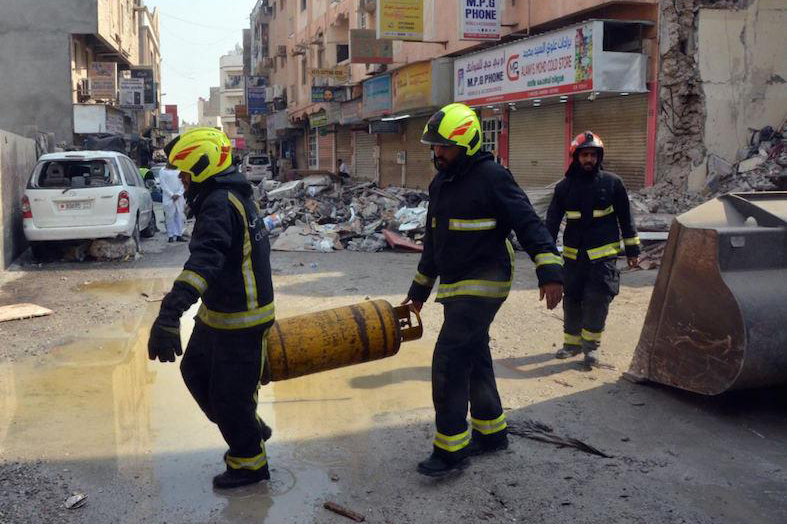
This research is conceived as a public monitoring and comparative analysis of Bahrain’s formal and informal labour accommodation. It primarily investigates recurrent fire incidents and structural collapses in historic buildings-cum-labour accommodation in Manama Souk, where purpose-built labour camps have recently proliferated, as representatives of slow violence against migrants. The project focuses on an incident in which a gas cylinder explosion led to a structural collapse that killed four and injured ten. By slowing down the moment of explosion, I look at the ways in which each minute encapsulates the broader politics of the Bahrain’s spatial organisation of labour.
Forming the Coalitional Debtor
Phoebe Bachman (RA)

Household debt has skyrocketed in the past few decades. In the UK, this is tied to wage stagnation, a shrunken welfare state, and widely available cheap credit. These debts have become part of a speculative economy, sold and traded, while continually increasing wealth for the creditors. Increasingly, activists, scholars, and economists have sounded the alarm on the growing debt bubble, citing previous economic recessions as warnings of increased precarity. My research explores the current state of household debt in capitalist societies and explains how debt accrues, while proposing a new solution that’s built on alliances among dispossessed peoples.
Data Aggregate, Dry Powder, and Liquid Housing :
The Materialization of ‘Coded Inequity’ in the US Residential Real Estate Industry
Rebecca Barron (FA)
Fracturing Memory:
Memorial Construction as State Violence
Sergio Beltrán García (FA)
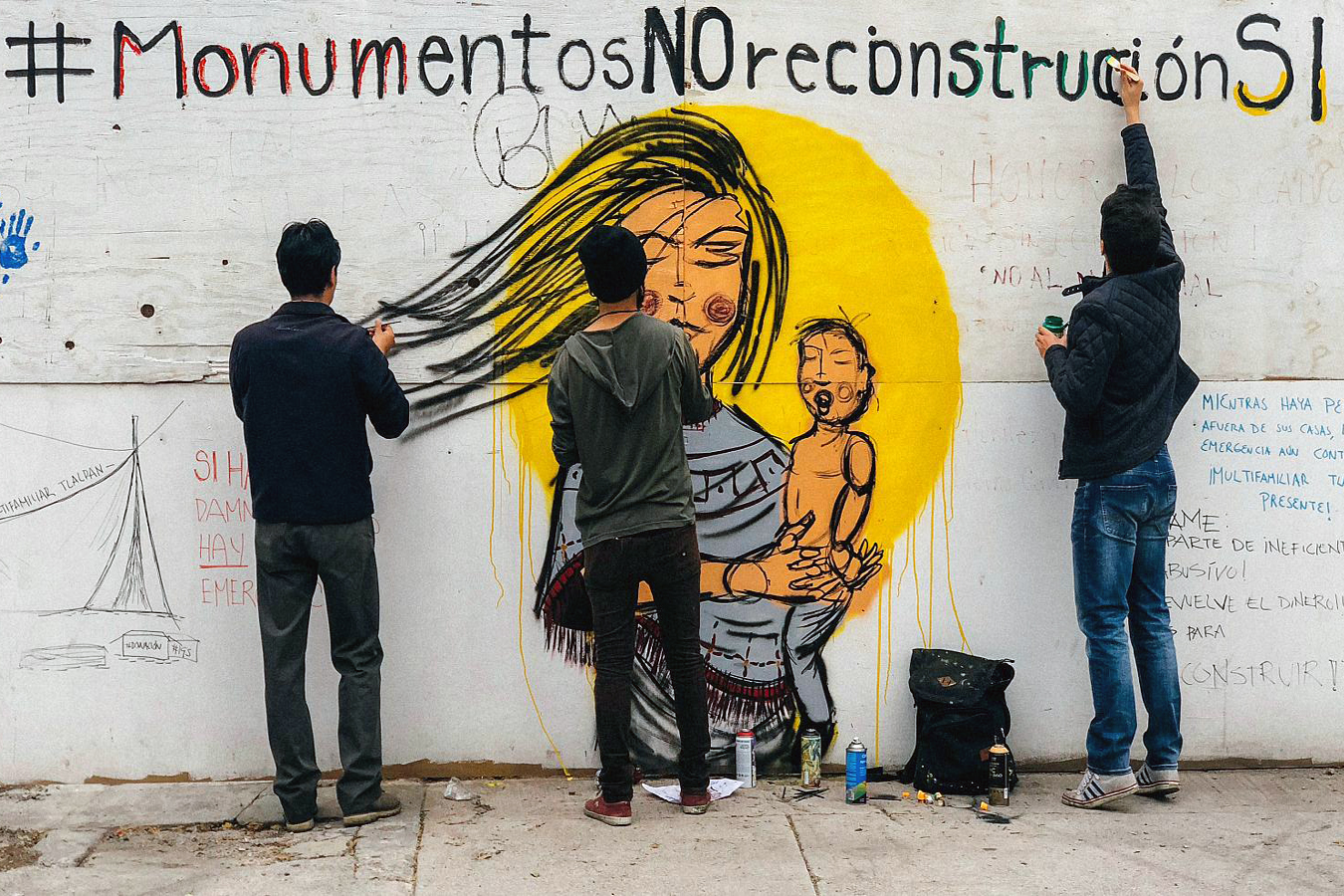
My research describes how the attempt to build the 19S Memorial in the aftermath of the deadly September 2017 earthquakes in Mexico City reveals memorial-building as a political and aesthetic practice of the State to repeat past violence under the guise of a deployment of the Human Rights and transitional justice tenets of truth, justice, memory, reparation and guarantees of non-repetition. To sustain this argument, I place in conversation a genealogy of contemporary State-sponsored memorial-construction with material evidence present in the AO286 building, which collapsed in the earthquake thus rendering visible the states’ control over the narrative and political imaginary.
Power, Space, Computation:
Surveillance and Statecraft in Xinjiang
Naoise Boyle (RA)

Since 2017 it is estimated over one million ethnic minorities in Xinjiang have been detained 're-education’ and forced labour camps as part of a governmental campaign against extremism and separatism. Using a critical methodological approach that draws from a range of data mapping and investigative techniques and expert interviews combined with eyewitness testimony from Xinjiang diaspora I map and document the actors, institutions and technologies which comprise the assemblage of surveillance architecture. It is hoped that my research makes a contribution towards constructing a platform for transparency and thus opportunities for further intervention and advocacy.
Slow Burn: Peat Fires and The Sinking and Spilling Of Toxins
Leigh Brown (FA)
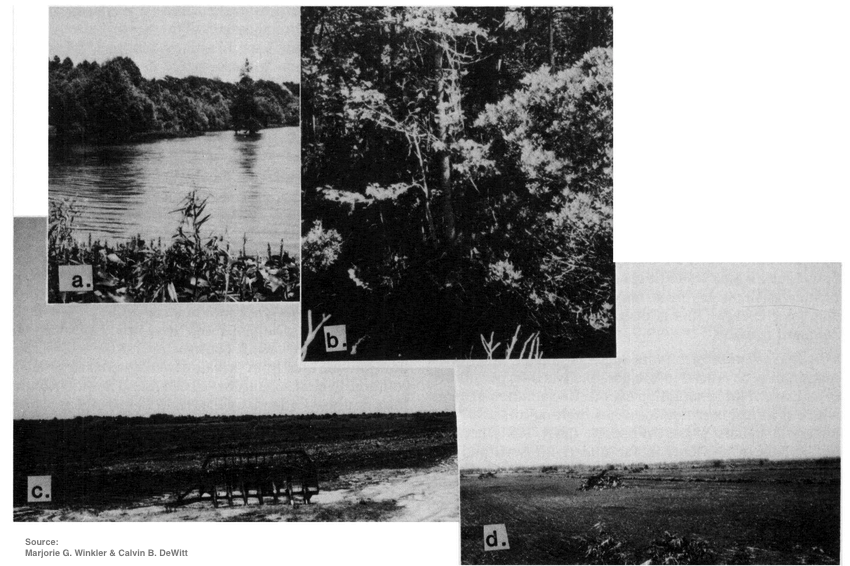
Peatlands are the largest natural terrestrial carbon store ("carbon sink"), covering only about three percent of earth but storing more carbon than all other vegetation combined. When peatlands, which are up to 95 percent water, are drained, organic carbon is exposed to oxygen and peat becomes vulnerable to fire, turning into one of the most flammable naturally occurring substances. My research challenges the polluting molecule as the locus of toxicity, pointing instead to wider structures of extraction and degradation. It is interested in the transfer and translations of matter from smouldering peat to other material and disciplinary realms.
Environmental Tuning
Riley Cavanaugh (FA)

In the 1990s, rising gun crime in Menlo Park, California led to a collaboration between a seismologist named John C. Lahr and the police departments. Lahr realised that a gunshot’s location could be determined using audio triangulation. Fast forward to 2020, gunfire detection systems are present in over 100 cities across the US. By mapping ShotSpotter’s sensors through Google Street View, I aim to understand not only the conditions for the placements, but the present and historical events left unheard. My map can then sync up with those documenting instances of police violence and use of weapons during the protests.
Troubled Data, Troubled Land
Erica Deluchi (RA)

My research examines the technological reformulations of colonial and financial expansion that are embedded in a long history of the appropriation of land. Using Australia as the region of focus, it first traces the conceptualisation of land into what I call a land-data object. I pay particular attention to the Torrens title by registration system, e-conveyancing and four-dimensional land-data cataloguing systems in order to problematise how a property system is not just one of ownership but of transfer based upon the erasure of consciousness, the production of data and the institutionalisation of information.
From Earth to Sky * از زمین تا آسمان: The Helmand River Basin as Conflict Infrastructure
Hanieh Fatourae (FA)

My research seeks to problematise development-based military invasion by focusing on how through USAID-funded Helmand Food Zone and aerial strike operations targeting opium-producing compounds, the UK and US governments have endangered populations’ livelihoods causing many civilian deaths and resulting in de facto multiplications of conflict. I also explore how the shift from indigenous knowledges of irrigation has spatially transformed the area and reconfigured it around the Western exploitation of rivers transforming into severe environmental violence. This research is an investigation around the ecological transformations tied to the history of colonialism and military invasion around the Helmand.
On Xenophobia, Homophily and Computational Culture
Océane Francioli (RA)

My research critiques and visualises racialised discourse, specifically concerning Chinese communities on Western digital platforms, which has intensified throughout the Covid-19 pandemic. In praxis, I am both compiling online search results in relation to China and developing a tagging/annotation-based archival tool. As COVID-19 progressed outside of China’s nation-state borders and into western countries, I observed my youtube content and requested videos changing into xenophobia-induced narratives and imagery. The archive will attempt to reorganise various existing and predominant narratives on online platforms in order to visualise the human biases and therefore socio-power structures embedded within these platforms’ technical architecture.
Infrastructures of Exhaustion
Silja Glomb (FA)
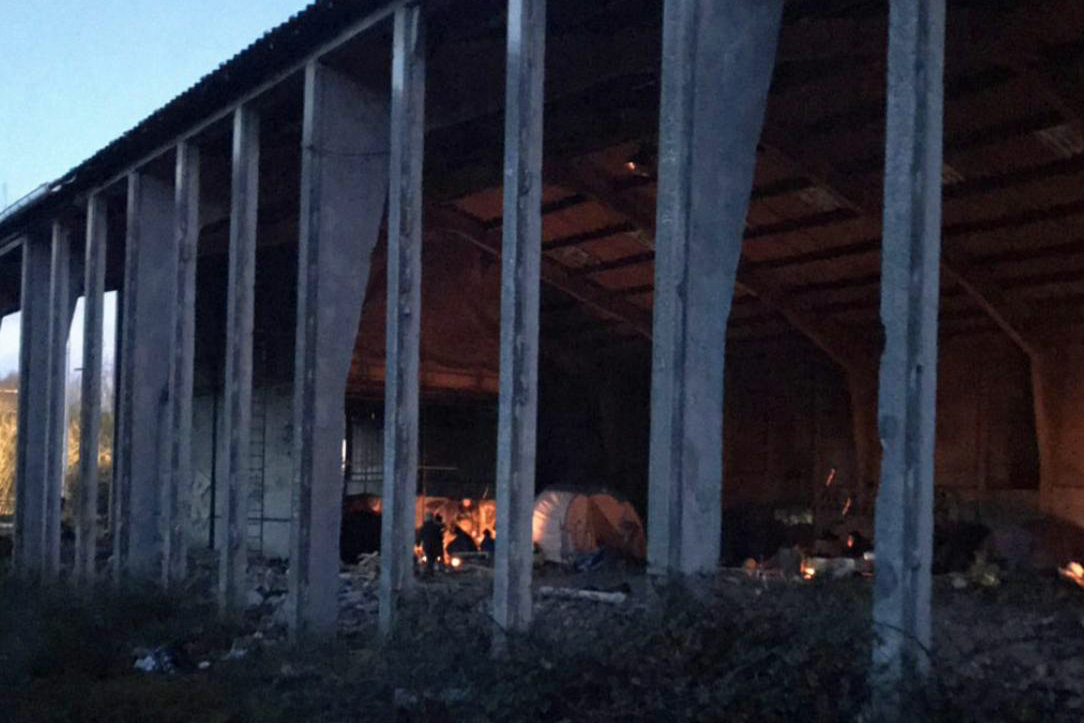
In Calais and Dunkirk, Northern France, hundreds of migrants are sleeping rough on the streets and in so-called ‘informal settlements’. The informal and ‘illegal’ nature of these camps often leaves the residents without access to basic infrastructures and subject to reoccurring evictions. This endless cycle of eviction and rehabitation can be understood as a spatial strategy of a ‘Politics of Exhaustion’. My research seeks to define the notion of “exhaustion” in the realm of migration management, through a study of qualitative work from key scholars. Further to this, the project considers how “exhaustion” could be developed as a conceptual tool or method of research.
Amphibious Geologies
Lodovica Guarnieri (RA)

My research investigates the politics of wetness in the Venice Lagoon by looking at the un-boundedness of water not only in its hydrologic formations, but also toxic leakages. To do so, rather than engaging with water as simple H2O, I understand it as a leaking archive that allows the circulation and persistence of matter and meaning in seemingly separate bodies, worlds and temporal scales. The degradation undergone by the environmental and social contexts of the Venice Lagoon is paradigmatic of the frictions between capital extractive practices that hold onto the binary land-water, and the transitional nature of the Lagoon.
Constructing Precrime:
Exposing The Dependence On Crime Futurity In Urban And Rural United States
Tamara Jamil (FA)
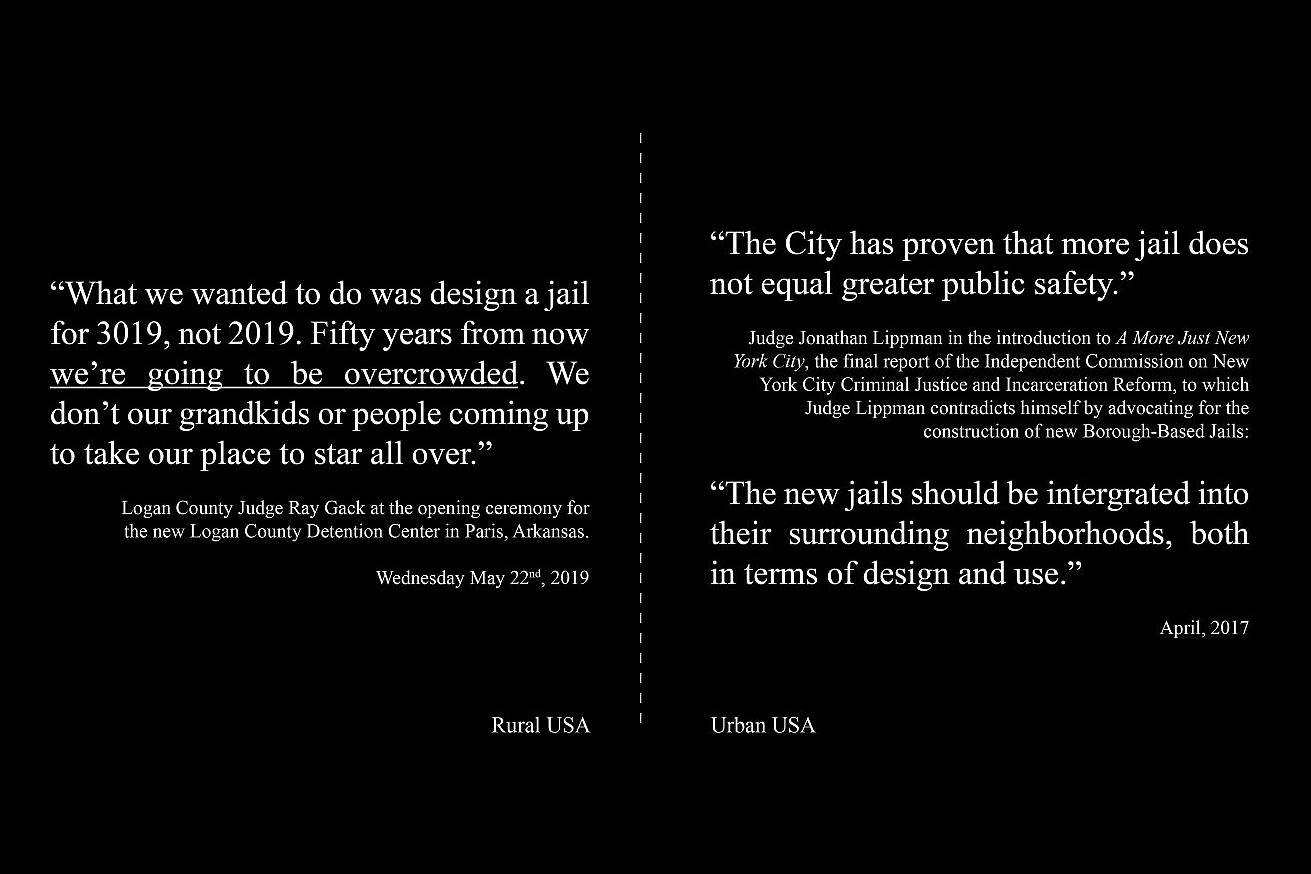
To understand why the United States continues to build carceral institutions across the nation, while crime rates have continued to decrease since the early 1990s, one must question the nation’s dependence on maintaining a criminal population, hence its dependence on crime futurity, in order to manage dispossessed communities. Using remote sensing and GIS mapping, a sample of jails constructed in rural America during the 21st century is examined to prove both the proliferating construction of jails and expose the direct relationship between the expansion of urban and rural carceral geographies through jail construction and the ensuring of future criminals.
Mapping A Martyrdom: A Genealogy Of Resistance Through Collective Action
Naiza Khan (RA)
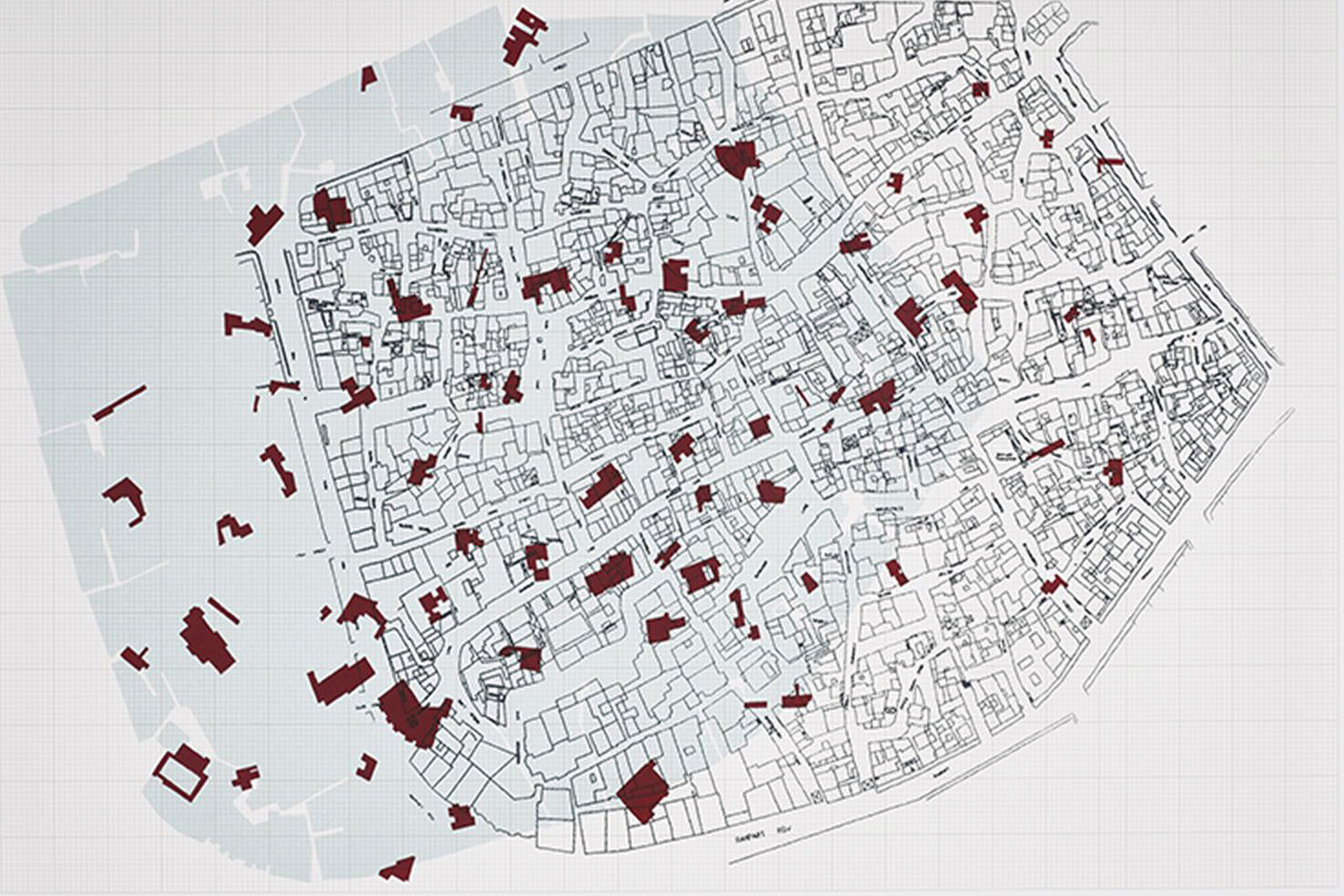
This project examines structures of power and modes of protest through a gendered history of environmental justice, discussed within the framework of ecofeminism. This approach is urgent in the case of Pakistan, as ideas of belonging need to be understood in relation to place and land rather than nationalist, patriarchal or religious frameworks. My research centres on the practice-based production of maps in the Orangi Pilot Project led by the urban environmentalist Perween Raman killed in 2013. I examine how political agency and urban resilience is shaped by the spatial politics of these settlements through a form of counter-mapping.
Hearing Asylum: Reducing Noise Through Acoustic Fencing
Mark Nieto (FA)

My research argues that the violence of the border is reinforced through the assemblage of the physical architecture of the temporary courthouse and the use of video-teleconferencing technology, replacing fair policies and keeping out peoples seeking safety. I schematize and identify the discrete components of the asylum process and the video-teleconferencing apparatus to reveal and highlight the limitations inherent in these architectures. In this way, the asylum system functions like the software component on video calls known as the acoustic fence, which reduces the background noise. For the U.S., asylum seekers represent a din; a prolonged and unpleasant background sound.
MÁCULA* a tale of absence, oceanic cosmologies and epistemological decolonisation
Bethania Soriano (FA)

In the course of the final four months of 2019, a large oil spill at sea sullied nearly two-thirds of the Brazilian coastline, affecting most severely, traditional communities of artisanal fishermen dependent on seasonal harvests for their sustenance and income. Whilst alternative lines of inquiry reveal several plausible explanations for this environmental catastrophe, I analyse evidentiary material traces to deconstruct truth-claims and ponder over matters of responsibility and accountability. I track the spill’s presumed trajectory in reverse, from the impact to the extractive zone - from soiled tropical beaches, through the geopolitics of mid-Atlantic transhipment, to the peculiarities of oilfields.
TBC
Luke Starr (FA)
Matrixiral Architectures
Xin yi Xie (RA)

My research attempts to interpret space as a “matrixial” medium and transgress subject-object orientations of physical spatial engagement. Conceiving of the human as a holobiont—an assemblage of multifarious species (bacteria, fungi, viruses) living in and around a “host”—I aim to unsettle the notion of architecture as necessarily a framing around bodies or events. Instead, how are spaces embedded within bodies, materials ‘breathed’ by holobiontic systems? How do subjectivities of multiple selves or “selves-with-others” texture urbanity? How will shifting, plaiting “matrixial” relations—physical and affective—shape cities and global infrastructures post-COVID-19?